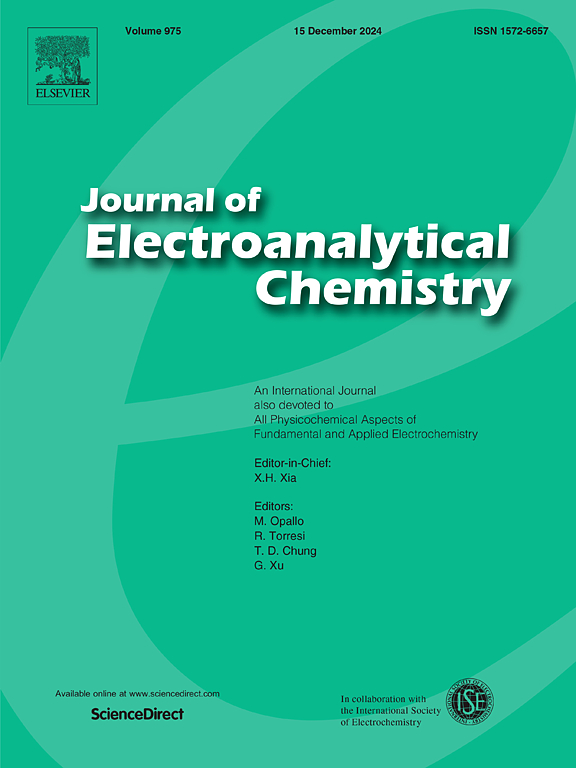Sustainable anode materials from Cenchrus fungigraminus biomass for advanced lithium-ion batteries
IF 4.1
3区 化学
Q1 CHEMISTRY, ANALYTICAL
引用次数: 0
Abstract
Biomass-derived materials have garnered significant attention as sustainable anode candidates for lithium-ion batteries (LIBs) owing to their abundance, low cost, and environmental benefits. Among these, Cenchrus fungigraminus (JUJUNCAO) stands out due to its rapid growth, high yield, and exceptional environmental adaptability, making it a promising precursor for carbon-based electrodes. In this study, activated carbon was synthesized from JUJUNCAO through a two-step process involving carbonization and KOH activation. By systematically varying the activation temperature and the biochar/KOH weight ratio, we precisely controlled key properties such as the degree of graphitization, porosity, chemical composition, and electrochemical performance. The optimized activated carbon exhibited a high specific surface area of 1055 m2 g−1 and delivered a reversible specific capacity of 393 mAh g−1 after 650 charge/discharge cycles at a current density of 0.1 A g−1. This superior electrochemical performance is attributed to the hierarchical porous structure and heteroatom doping, which synergistically enhance lithium-ion diffusion and electron transport. These findings not only underscore the potential of JUJUNCAO as a sustainable, high-performance anode material for LIBs but also pave the way for the high-value utilization of biomass in green energy storage technologies.
求助全文
约1分钟内获得全文
求助全文
来源期刊
CiteScore
7.80
自引率
6.70%
发文量
912
审稿时长
2.4 months
期刊介绍:
The Journal of Electroanalytical Chemistry is the foremost international journal devoted to the interdisciplinary subject of electrochemistry in all its aspects, theoretical as well as applied.
Electrochemistry is a wide ranging area that is in a state of continuous evolution. Rather than compiling a long list of topics covered by the Journal, the editors would like to draw particular attention to the key issues of novelty, topicality and quality. Papers should present new and interesting electrochemical science in a way that is accessible to the reader. The presentation and discussion should be at a level that is consistent with the international status of the Journal. Reports describing the application of well-established techniques to problems that are essentially technical will not be accepted. Similarly, papers that report observations but fail to provide adequate interpretation will be rejected by the Editors. Papers dealing with technical electrochemistry should be submitted to other specialist journals unless the authors can show that their work provides substantially new insights into electrochemical processes.

 求助内容:
求助内容: 应助结果提醒方式:
应助结果提醒方式:


